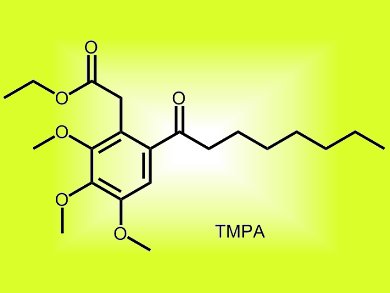5′ Adenosine monophosphate-activated protein kinase (AMPK) plays a crucial role in glucose metabolism by stimulating its uptake from the circulation. Thus, it is an important therapeutic target to treat disorders associated with abnormal blood sugar levels such as diabetes and obesity.
The discovery of novel mechanisms regulating AMPK activity enabled Chinese scientists to identify a chemical compound which can be used to stimulate the enzyme pharmacologically. Yan-yan Zhan, Xiamen University, and colleagues demonstrated that AMPK is inhibited when its activator, the liver kinase B1, is bound to the nuclear receptor Nur77. By preventing the interactions that occur between these two molecules, ethyl-[2,3,4-trimetoxy-6-(1octanoyl)phenyl]acetate (TMPA) activates AMPK, thus reducing the pathological accumulation of glucose that takes place in the blood of diabetic and obese mice.
TMPA is, therefore, a new promising drug for metabolic disorders.
- The orphan nuclear receptor Nur77 regulates LKB1 localization and activates AMPK,
Y. Y. Zhan, Y. Chen, Q. Zhang, J. J. Zhuang, M. Tian, H. Z. Chen, L. R. Zhang, H. K. Zhang, J. P. He, W. J. Wang, R. Wu, Y. Wang, C. Shi, K. Yang, A. Z. Li, Y. Z. Xin, T. Y. Li, J. Y. Yang, Z. H. Zheng, C. D. Yu, S. C. Lin, C. Chang, P. Q. Huang, T. Lin, Q. Wu,
Nat. Chem. Biol. 2012, 8(11), 897–904.
DOI: 10.1038/nchembio.1069




